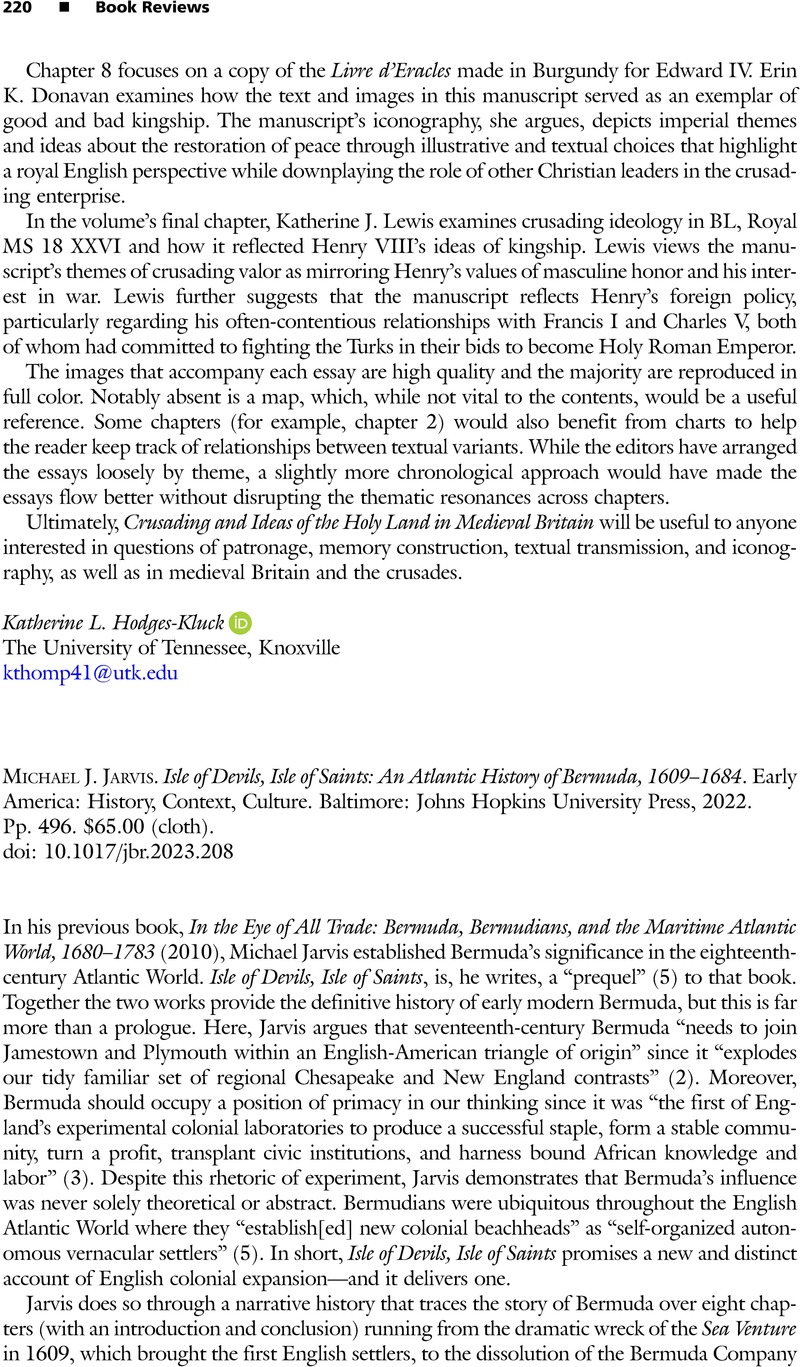No CrossRef data available.
Article contents
Michael J. Jarvis. Isle of Devils, Isle of Saints: An Atlantic History of Bermuda, 1609–1684. Early America: History, Context, Culture. Baltimore: Johns Hopkins University Press, 2022. Pp. 496. $65.00 (cloth).
Review products
Michael J. Jarvis. Isle of Devils, Isle of Saints: An Atlantic History of Bermuda, 1609–1684. Early America: History, Context, Culture. Baltimore: Johns Hopkins University Press, 2022. Pp. 496. $65.00 (cloth).
Published online by Cambridge University Press: 29 May 2024
Abstract
An abstract is not available for this content so a preview has been provided. Please use the Get access link above for information on how to access this content.

- Type
- Book Review
- Information
- Copyright
- Copyright © The Author(s), 2024. Published by Cambridge University Press on behalf of The North American Conference on British Studies



